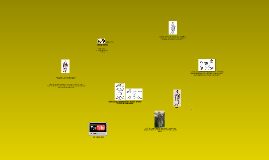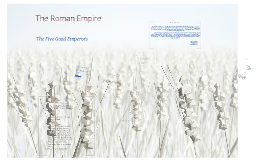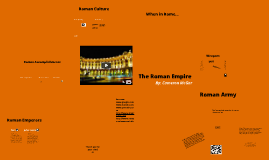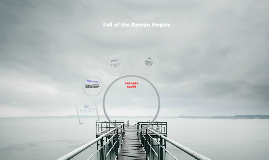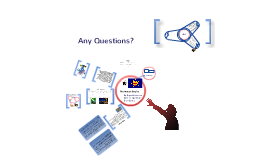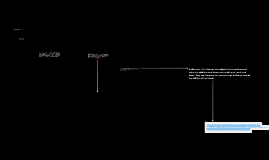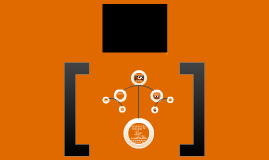Roman Empire
Transcript: The Roman Empire Roman Army The Romans had many battle tactics. Here are a few. Shield-to-shield- Also known as the "tortoise" in this formation soldiers other than the first row were to stand with their shields over head. The first or front row of soldiers were to hold their shields to their sides. This created a "shell" of armor protecting the infantry from projectiles. Cannae- Also known as the "weak center" in this formation soldiers left a weak central battle line tempting the enemy to strike there. But when they did they had forgotten the rest of the battle line was strong. Therefore, when the enemy was in their league, the rest of the battle line enveloped them. Wedge- This very common defense strategy was when soldiers formed a triangular structure then used this to thrust small groups into the enemy with a strong impact also pushing the enemy troops behind. Zama- Another very interesting Roman tactic also known as the "maniple channel strategy" was when there were channels made between the legions or maniples. This commonly confused the enemy as to which maniple to attack first. Weapons Sword- One of the most common ancient weapons used by the Romans. It was a long, pointed and double-edged Iberian weapon called the "Spanish sword." *Ceasar carried one special sword called a "Gladius." Dagger- A fighting knife with a sharp point made of copper alloy or iron. Pilum- Ancient short-range assault instrument that resembled a heavy javelin with a pyramidal head. Shield- Roman shields were oval, rectangular or hexagonal. They were typically made of thick wood bordered with copper alloy or iron. Spear- Mainly three kinds of spears were used by ancient Roman soldiers: light javelins, thrusting spears and two-handed lances. Roman Emperors Nero Birth date: December 15, 37 Death date: June 09, 68 Place of birth: Antium, Italy Summary: Nero discouraged luxury, reduced the taxes, and increased the authority of the Senate. Nero gained throne as a result of his mother murdering all other oppositon. Nero commited many crimes during his reign but possibly the worst was the burning of Rome. It is unknown whether Nero was responsible for its burning or not. Once the fire had come to an end after six days Nero blamed the Christians. He became the first to persicute the Christians. Julius Ceasar Birth date: July 12 or 13, 100 B.C. Death date: 44 B.C. Place of birth: Rome, Italy Summary: Ceasar wasn't really an emperor. He was considered a "Dictator perpetuus" (Latin for dictator in perpetuity.) Aside from being dictator and strategic military leader Ceasar was also a general, a statesman, a lawgiver, a jurist, an orator, a poet, a historian, a philologer, a mathematician, and an architect. Julius Caesar was also distinguished as an author, and wrote several works which related the history of the first seven years of the Gallic War and the history of the Civil War. Roman Accomplishments Roman Art & Literature The Romans developed Roman numerals (hence the name!) This is significant because it is widely used across the United States and the world! They're used in the Super Bowl, movie titles, and in the army corps. Romans were noticeably interested in one art called "mosaic" art. This type of art was created by using small pieces of tile, glass or stone. The pieces were arranged on a smooth surface, such as a wall to form a pattern. These patterns would depict gods, heroes, and even basic Roman life. Roman literature including drama, poetry and prose became popular during the 240's B.C. this period is known as the "Golden Age of Roman drama." Roman Architecture The Romans invented the technology for concrete, aqueducts, arches and roads. When a city was conquered, roads were constructed to connect it to Rome, the capitol of the empire. Milestones were installed on the side of the road informing a traveler the distance to be covered to reach Rome. Roman aqueducts were built to carry water from the springs or rivers to the public baths and fountains. These baths had a plumbing system to drain the dirty water. Aqueducts were built all across the vast Roman Empire and some are still functioning today. Roman Laws Romans formulated many of the laws multiple countries use today. Roman laws were applicable to any and all Romans, irrespective of his place in society. Roman laws were written on metal tables and were organized into twelve sections. Therefore, they were known as the "Twelve Tables." These tables were displayed at the various Roman forums or meeting places in all the Roman cities. Examples of Roman Laws: A person is innocent until proven guilty If you have summons from the court, you are expected to attend the court. Or else, you could be taken by force to the court. Capital punishment would be imposed on a person found guilty of giving false witness. No one is allowed to hold meetings after nightfall. Roman Culture Roman Mythology Long before the emergence of Christianity, Roman mythology was greatly influenced by






